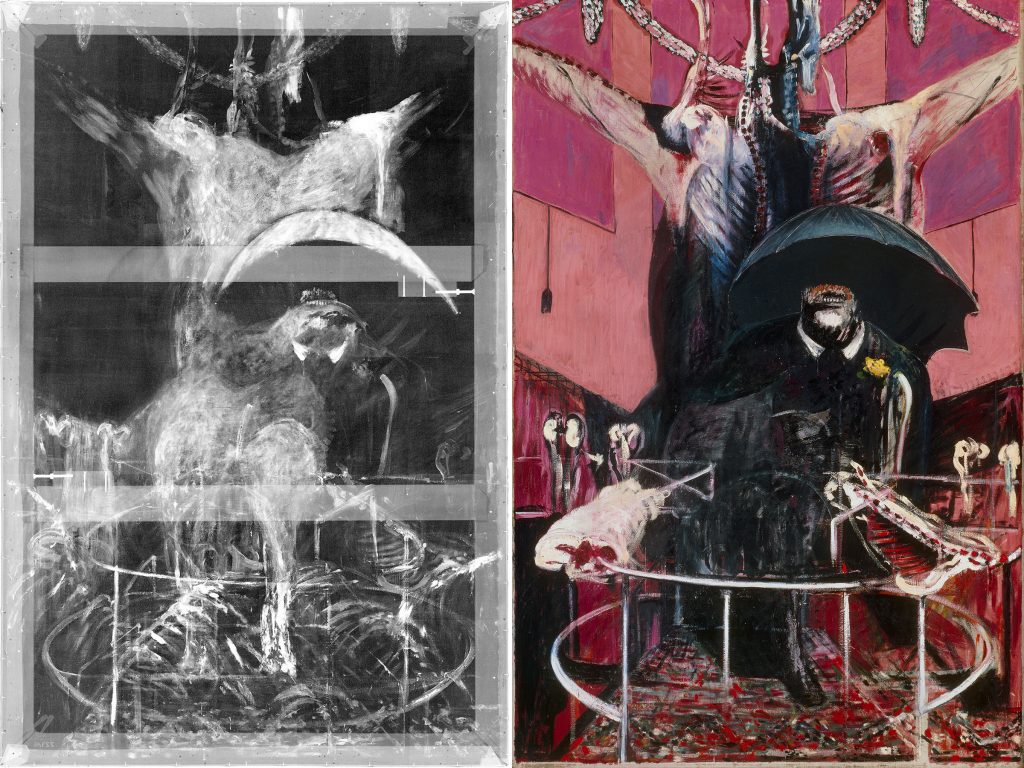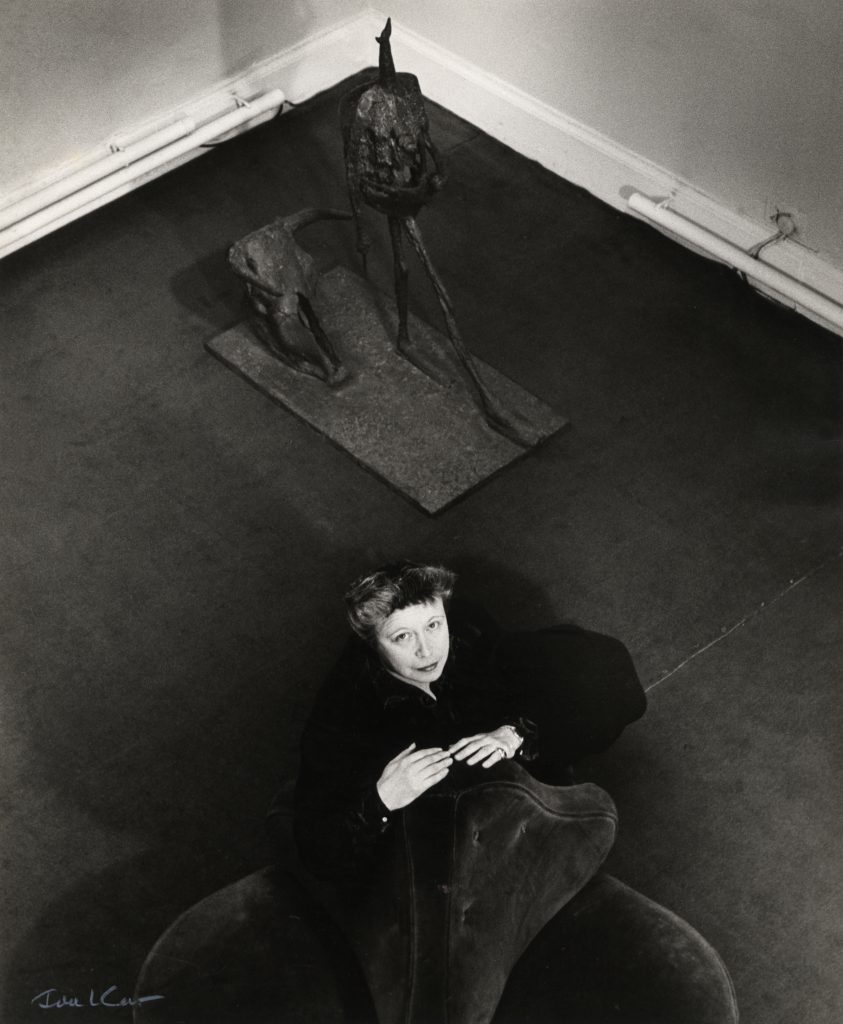FRANCIS BACON always said that Erica Brausen had the best eye in the art world. An accolade like that from the master was unique. One of his own favourite paintings was Painting 1946 (‘I don’t like my paintings for very long. I have always liked that one, it goes on having power’). It was spotted by Brausen on her first visit to the artist’s studio, stacked against the wall in his shabby room in Beaufort Gardens, near Harrods. She immediately drew out pounds 350 in pounds 5 notes and bought it (she sold it on to the Museum of Modern Art in New York in 1948). This was a small fortune for Bacon, saddled at the time with mounting gambling debts. The two soon became devoted to each other and he had his first one-man exhibition at her gallery, the Hanover Gallery, in November 1949. For a long time Bacon was not to receive that sort of money again, but the dealer-artist relationship worked well and nourished what many believe to be the greatest period of his work.

Erica Brausen was born into a conservative merchant bourgeois family in Dusseldorf in 1908. Distant from her mother, she always remained at odds with her father, who was master of the local hunt. After completing her education and with the rise of Hitler she departed Germany for the Paris of the 1930s. For some time she shared a large house in Montparnasse and was able to survive on her family’s small allowance. Liberated by the heady Bohemian atmosphere there, she got to know the young giants of the Parisian art milieu and became a prominent figure at art exhibitions.
An intellectual friendship with the Catalan sculptor Joan Miro led her to travel to Majorca, in 1935. There she ran a popular bar frequented by many writers and artists who enjoyed the good island life. As Franco’s Fascism began its heavy march across Spain, Brausen, operating under the code name of Beryl, clandestinely helped her many Jewish and socialist friends escape the naval blockade. Michel Leiris, later France’s great man of letters, credited Brausen with saving him and his wife. Through her contacts with the US Navy, who often docked on the island, Brausen convinced a submarine captain of the importance of getting the Leirises off the island. They were secreted on board and safely delivered to Marseilles. Brausen herself slipped away on a fishing boat and with difficulty made her way to England. She arrived penniless as war broke out.
In London she rejoined some of her old friends from the Continent and set about organising small exhibitions in artists’ studios, but, as an exiled German, she found it difficult to earn a living by working legally. Fortunately, a sympathetic homosexual artist friend married her, to give her status. They remained lifelong friends. Her first real work in England was to start in the mid-Forties at the Redfern Gallery, in the West End of London.
In 1946 Brausen met the flamboyant millionaire American banker Arthur Jefferies at a party and they immediately took to each other. Jefferies agreed to bankroll her in her own gallery. A lease was secured to 32a St George Street, just off Hanover Square, in London, and the Hanover Gallery was born. Brausen set about turning a drab space into a great showroom for art exhibitions. Bacon remembered it as ‘an excellent exhibition space with large rooms of good proportions and proper day lighting for the pictures’.
It is almost impossible to overstate the importance of the Hanover Gallery in the international art world at that time. From early in 1947, when it first opened, until it finally closed on 1 April 1973, it became – driven by Brausen’s vision – the most diverse and interesting art gallery in Europe. The Swiss sculptor Alberto Giacometti had formed a friendship with Brausen years before in Paris, and Giacometti and Bacon were often to be seen together in the Hanover, arguing about art or sex.
Brausen suffered a great loss when in 1958 Bacon left the Hanover to join the Marlborough Gallery, with whom he remained until his death. He later said that he had been sad to leave Brausen, but that he was desperately short of cash and needed pounds 5,000 to pay off his debts. The Hanover’s new backer was none too happy about advancing a large sum of money to this rather queer, raffish, gambler artist and refused to do so. Bacon said that he had no choice but to enter into a contract with the Marlborough. Brausen, in France at the time, returned to London devastated. To lose her first artistic ‘find’ and now greatest star, of whom she was extremely fond, was a catastrophe. Remorse turned to anger and there were mutterings about suing the departed artist. But, as Bacon pointed out, as he had never had a contract with the Hanover, he could not be sued. That was the end of their artistic relationship. They never made it up, although Bacon kept a lifelong interest in her work and many projects. (When, several years ago, he was told that she was ill and needed medical attention, he immediately sent her pounds 100,000.)
Brausen had a close working relationship with many of the titans of 20th-century art, among them Matisse, Miro, Henry Moore and William Scott. (The Hanover held annual sculpture exhibitions and Moore allowed Brausen to buy his work directly from him; she in turn afforded him the rare opportunity of arranging his own exhibitions in her gallery.) She often saw, and exhibited the works of, the Surrealists Marcel Duchamp, Max Ernst, Man Ray and Rene Magritte. Her own collection in her elegant London maisonette included works of these artists beautifully displayed. She acquired a striking collection of furniture by Alberto Giacometti’s brother Diego, to offset her works by Alberto. Rodins sat easily beside a fabulous collection of early Egyptian sculpture.
Two important people close to Brausen helped to make the Hanover Gallery the success it was and to ensure its place on the international art scene. Jean-Yves Mock, now 65, is the curator of retrospective exhibitions at the Pompidou Centre in Paris. He joined the Hanover as an assistant in 1956 and remained there until it closed. He proved a brilliant administrator and worked energetically beside Brausen.
Another enormous influence and great love of Brausen’s was the exotic mixed-blood Javanese Dutch beauty Catherina ‘Toto’ Koopman. In the Twenties and Thirties Toto Koopman reigned as one of Europe’s most beautiful women, a model and sometimes an actress. She was caught spying for the Allies in Italy in December 1941, and survived nearly four years at the Nazi concentration camp of Ravensbruck, recuperating in Switzerland in the summer of 1945. The same year, in Florence, she met Brausen. Koopman moved to London and two women lived together until her death in August 1991.
Koopman vividly recalled the unnerving but dramatic experience of sitting at the front desk of the Hanover during a Francis Bacon exhibition, with six of his huge, nightmarish screaming Popes lined up on the gallery wall directly behind her. She never forgot the agonised look on startled visitors’ faces.
In 1958, the two women began to create an outstanding residence on the dream-like island of Panarea, north of Sicily – Le Case dei Sette Mulini, six white houses exquisitely interwoven with stunning terraces and descending gardens to the sea.
After the Hanover closed its doors in 1973, Brausen continued to deal in art either from home or from the Zurich-based gallery which she had started in 1961, and shared with Gimpel fils. Although a shy and retiring person by nature, she would extract ‘top dollar’ from even the sharpest New York dealer after one of her pieces.
The complex and intriguing quadrangular relationship between a gallery, dealer, artist and public is a difficult one to explore. On very few occasions do all the ingredients come together successfully to push the boundaries of what we know and expect in that medium to something new and exciting. During the 25-year life of the Hanover Gallery this happened. Erica Brausen’s ceaseless exploration opened new vistas in the appreciation of contemporary art.
/The Independent/
Erica Brausen, art dealer, born Dusseldorf Germany 31 January 1908, died London 16 December 1992.

supported by
